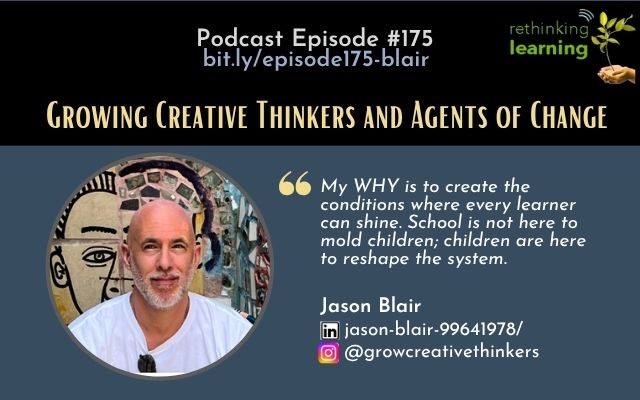
Podcast: Play in new window | Download
Jason Blair is a transformative force in arts education, with over 20 years dedicated to unlocking the creative potential of young minds. As an elementary art teacher in Dublin, Ohio, and the Educator-in-Residence at the Columbus Museum of Art, Jason has established himself as a visionary leader whose influence extends far beyond the classroom. His innovative approach to education has reshaped how creativity is nurtured and valued in schools nationwide.
Your WHY
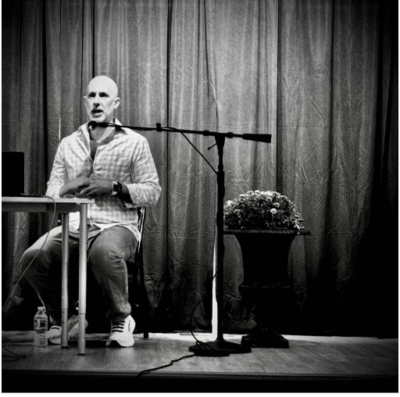 When I was a kid, I didn’t play the game of school very well. I didn’t fit the mold of what a “good learner” was supposed to be. I wasn’t someone who conformed easily or complied without question. I didn’t quietly assimilate into a system designed to shape me; I resisted. I pushed back, not to cause trouble, but because deep down, I believed the system should have to fit me, not the other way around.
When I was a kid, I didn’t play the game of school very well. I didn’t fit the mold of what a “good learner” was supposed to be. I wasn’t someone who conformed easily or complied without question. I didn’t quietly assimilate into a system designed to shape me; I resisted. I pushed back, not to cause trouble, but because deep down, I believed the system should have to fit me, not the other way around.
Thankfully, I had a strong support system at home. My parents always stood by me, and my dad, in particular, was my biggest cheerleader. As a creative artist himself, he understood that intelligence shows up in many forms. He reminded me often: it’s not that I wasn’t smart, it’s that the way I was smart wasn’t recognized or valued in school.
Still, refusing to play the game came at a cost. I left high school feeling small, ranked near the bottom of my class, and barely graduated. It wasn’t until I got to college, when I could chart my course, that I began to thrive. I discovered my voice. I realized that when I could engage creatively and express myself authentically, I didn’t just learn, I came alive. I was no longer a passive consumer of education or a reluctant agitator. I became an active participant in my growth.
That’s my “why.” It always has been, to create the conditions where every learner can shine.
I believe school is not here to mold children; children are here to reshape the system. As educators, we must be agile, open, and deeply human. We must cheer, challenge, and champion each child, and sometimes step aside so they can step forward.
My why is rooted in building systems that honor who children are, not who they’re expected to be. Systems that are fair, sustainable, and beautiful, for all of us.
Your Background
On paper, I might come across as shy, an introvert in an extroverted world. But I don’t say that with shame or hesitation. I’m a proud introvert. My quiet nature has been one of my greatest strengths. It allows me to observe deeply, to listen intently, and to notice patterns and connections that others often miss. My artist’s heart helps me see how the world fits together in unexpected, beautiful ways and how our lives are more interconnected than we often realize.
When I began my career in education, I lacked confidence. I was constantly seeking approval, unsure if my voice mattered. I started as a traditionalist, someone who could’ve taught 50 years ago and fit right in.
Even as an art teacher, I unconsciously reinforced the myth that learning was about following directions to produce tidy, polished products. Creativity, in my early practice, had boundaries.
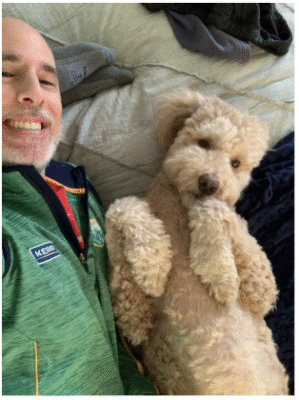 But as I found the courage to share my voice, everything began to shift. With every affirmation, every moment someone said, “your ideas matter,” I grew more confident. I began to step out. And with that, my teaching transformed. I moved away from ranking, sorting, and product-driven work toward something deeper, a focus on the creative process, on thinking, questioning, exploring, and growing. Learning became less about control and more about discovery for both me and my students.
But as I found the courage to share my voice, everything began to shift. With every affirmation, every moment someone said, “your ideas matter,” I grew more confident. I began to step out. And with that, my teaching transformed. I moved away from ranking, sorting, and product-driven work toward something deeper, a focus on the creative process, on thinking, questioning, exploring, and growing. Learning became less about control and more about discovery for both me and my students.
This transformation gave me the foundation to support others in their journeys. About six years ago, I stepped into consulting and professional development (and continuing to remain a full-time teacher), and it’s been one of the greatest joys of my life.
Whether I’m facilitating a workshop or delivering a keynote, one piece of feedback I hear often is that my passion is palpable, that it inspires others.
For a long time, I didn’t understand that. But now I do.
When I speak about student-centered learning and when I explore how we can bring more joy, agency, and purpose into classrooms, I lose myself in it. My introversion quiets. My passion speaks. That’s when I feel most alive.
This path has led to some incredible opportunities: collaborating on a five-year research project with Harvard’s Project Zero and the Columbus Museum of Art to explore how we cultivate creative and civic capacities; serving on the board of the Human Restoration Project; becoming the Teacher-Leader-in-Residence at the innovative Columbus Museum of Art, and so much more.
My journey has been anything but linear. It is full of twists, turns, unexpected detours, and beautiful surprises. But every step has brought me closer to my purpose. It’s brought me to extraordinary places, to brilliant minds (like Barbara!), and to a life full of connection, meaning, and joy.
What I wish I knew….
If there’s one shift I wish I had made earlier in my teaching journey, it would be embracing the mindset of an action-based researcher and approaching every day with the question: “What happens when…?”
That simple question would have empowered me to experiment, take risks, and view each day not as something to control, but as something to discover. Instead of teaching for predictable outcomes, I could have been designing for possibility. This mindset invites curiosity over compliance, imagination over routine, and growth over perfection.
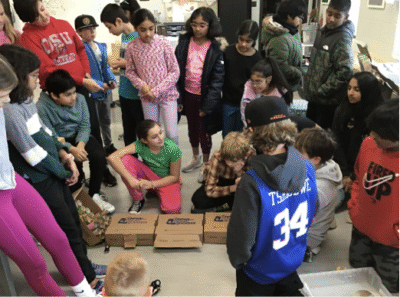 Too often in education, we’re obsessed with the wrong kind of consistency. We standardize everything—pages, pacing guides, seating charts, hallway behavior.
Too often in education, we’re obsessed with the wrong kind of consistency. We standardize everything—pages, pacing guides, seating charts, hallway behavior.
Our schools are some of the most unchanged, unchanging systems in modern life. They are locked in routines that haven’t shifted meaningfully in over 150 years. And yet, we live in a world of rapid transformation, creativity, and innovation. We’re doing our kids a deep disservice by preparing them for a world that no longer exists.
What our students do need is consistency in emotions, in feeling safe, seen, and valued. They need to know each day that they are more than test scores or compliance checklists. That risk-taking, failure, play, and wonder are not just tolerated, they’re expected and celebrated.
When we teach through the lens of “what happens when…” as I do now, the classroom becomes a living ecosystem of curiosity. Each day becomes a surprise. A seed is planted. A spark is nurtured. An idea begins to grow. It helps break students out of the mindless, monotonous routines of school and invites them into a more mindful, alive, and responsive way of learning.
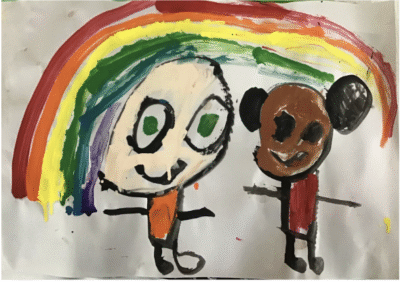 It also expands how students see themselves. Not just as future workers or test-takers, but as dreamers, healers, makers, weavers, and changemakers. These are the identities that lead to purpose, not just success.
It also expands how students see themselves. Not just as future workers or test-takers, but as dreamers, healers, makers, weavers, and changemakers. These are the identities that lead to purpose, not just success.
And this shift doesn’t just liberate students, it liberates teachers too. Right now, we’re facing an engagement crisis in schools, and it’s not just among kids. Teachers are burned out, disconnected from their purpose, and stripped of agency.
But when we return to the simple question, “What happens when…? we begin to reclaim that agency. We start to remember why we came to this work in the first place. Not to manage routines. But to nurture transformation.
Who am I?
“Who am I?” is a question we often ask, but I’ve come to believe that “Where am I?” is just as important. Because we are all in motion on a journey that constantly shapes how we see ourselves and the world. With every new place we arrive in, physically, emotionally, spiritually, we carry fresh perspectives, hard-won lessons, and evolving truths.
My journey, like anyone’s, has been filled with joy and beauty, pain and loss, moments of light and moments of darkness. These experiences have shaped not just where I’ve been, but who I’m becoming. And they’ve taught me something essential: the “me” outside of the classroom is inseparable from the teacher I am inside of it. One cannot exist without the other.
We live in a world increasingly defined by polarities—us vs. them, right vs. wrong, this or that. It’s easier, safer, and more comfortable to stay inside our bubbles, to sort and label, to reduce people and experiences into neat categories. But in doing so, we lose something vital, our humanity.
I want to push beyond those binaries.
I believe we’ve ignored our interconnectedness for too long. We’re not meant to live in silos. We’re meant to be weavers. Each of us carries a thread. Each of us contributes to the tapestry of our shared humanity. I want to better understand the fabric that binds us. I want to notice the threads others might miss. I want to honor the beauty of complexity in a world that tries so hard to simplify everything.
Because when we force people into binaries, we reduce them to caricatures. We flatten rich, nuanced lives into single labels or data points. We sort and stack stories without ever taking the time to read them. We become a society that favors judgment over curiosity.
I’m trying to live differently.
I want to lead with questions, not conclusions. I want to approach the world with wonder rather than certainty. I want to lean into the complexity of people, places, and stories, because that’s where truth lives. That’s where empathy is born.
So I wonder…
How can we be more curious?
How can we resist the urge to simplify what is meant to be complex?
How can we see beyond the labels and into the layered, living stories of others?
These are the questions that guide me as both a human and a teacher.
Projects and Reflections
Projects
My collaboration with Harvard University’s Project Zero on the Cultivating Creative and Civic Capacities initiative was a transformative experience, turning bold ideas into real, impactful practices that redefined what education can look like in the modern world.
As Educator-in-Residence at the Columbus Museum of Art, I’ve had the privilege of helping reimagine the role of creativity in education. I’ve worked to position creativity not as an “extra,” but as essential to deep, meaningful learning. Through projects like Making Creativity Visible, I’ve partnered with educators to empower them as creativity instigators, leaders who cultivate imaginative, inquiry-driven learning environments where all students can thrive.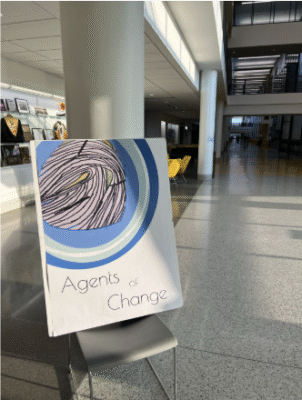
A few years ago, I founded the Age of Change Festival—an event designed to spotlight deeper learning by placing students at the center of their educational journeys. What began with four teachers from three districts and approximately 150 community members has since grown into a powerful movement. Last year’s festival brought together 16 teachers from 7 districts and over 500 community members. Educators, families, and leaders, all rallying around the belief that students should not just receive learning, but lead it.
Reflections
What If, Instead of a Portrait of a Graduate, We Embraced a Pathway of a Learner?
The World Needs Artists Now More Than Ever
It’s Not Recess, It’s Revolution: Reimagining Learning Through Voice, Choice, and Purpose
Jason’s Contact Information
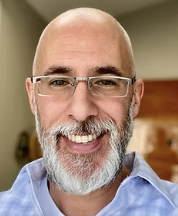 LinkedIn: https://www.linkedin.com/in/jason-blair-99641978/
LinkedIn: https://www.linkedin.com/in/jason-blair-99641978/
Website; https://www.growcreativethinkers.com/about
Bluesky: @jasonblair1.bsky.social
Instagram: @growcreativethinkers
Email: jasonmblair@mac.com
| Creativity Consultant | Empowering Creative Confidence |
Championing Creative Change Agents |
Let’s Inspire Innovative Practice Together!
*****
Thank you, Jason Blair, for joining me on my virtual porch. I was impressed with Jason’s experiences and projects, Making Creativity Visible and the Age of Change Festival. How he empowers young learners to own and drive their learning is inspirational. I hope you connect and follow Jason. Please share this post and podcast with your friends.
*****
Make sure you check out more of the Rethinking Learning podcasts and each post that the guests created. Click on this link or the logo below to list by episode, alphabetical, or reflections. |
I am also the co-host of the “Real Talk” podcast with Nicole Biscotti. We delve deep into the topic “Authenticity in a Polarized Society.” Click on RealTalkBN or the logo below. |
I’m getting wonderful feedback on how much the information and stories in “Define Your Why” have helped them. For more information about this book, go to this page or click on the book for resources, questions, and links. |
My latest book, “Grow Your Why…One Story at a Time,” includes 23 stories from inspirational educators, innovators, and entrepreneurs. Go to this page or click on the book to go to Why Press Publishing for launching, details, and resources. |


